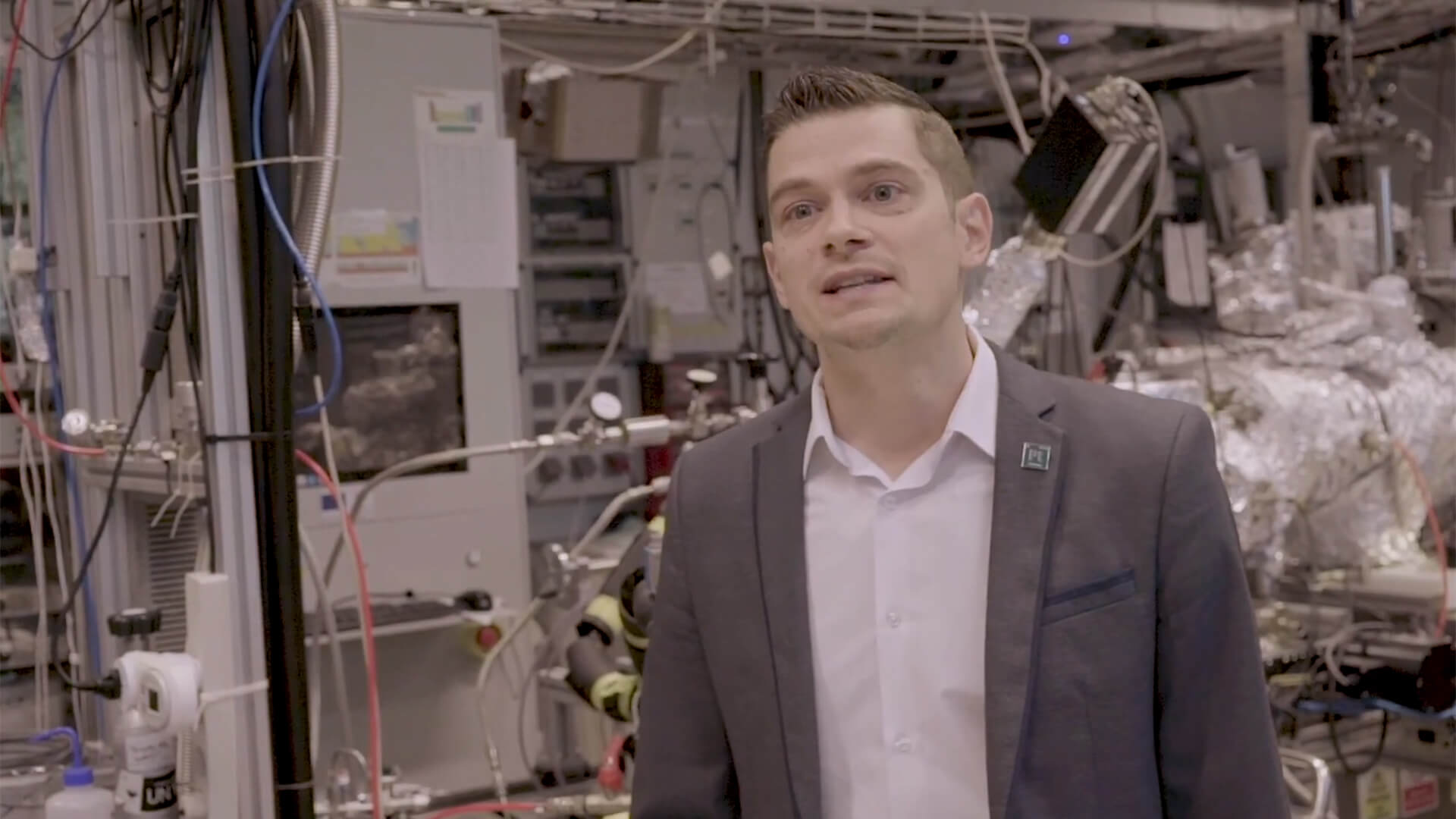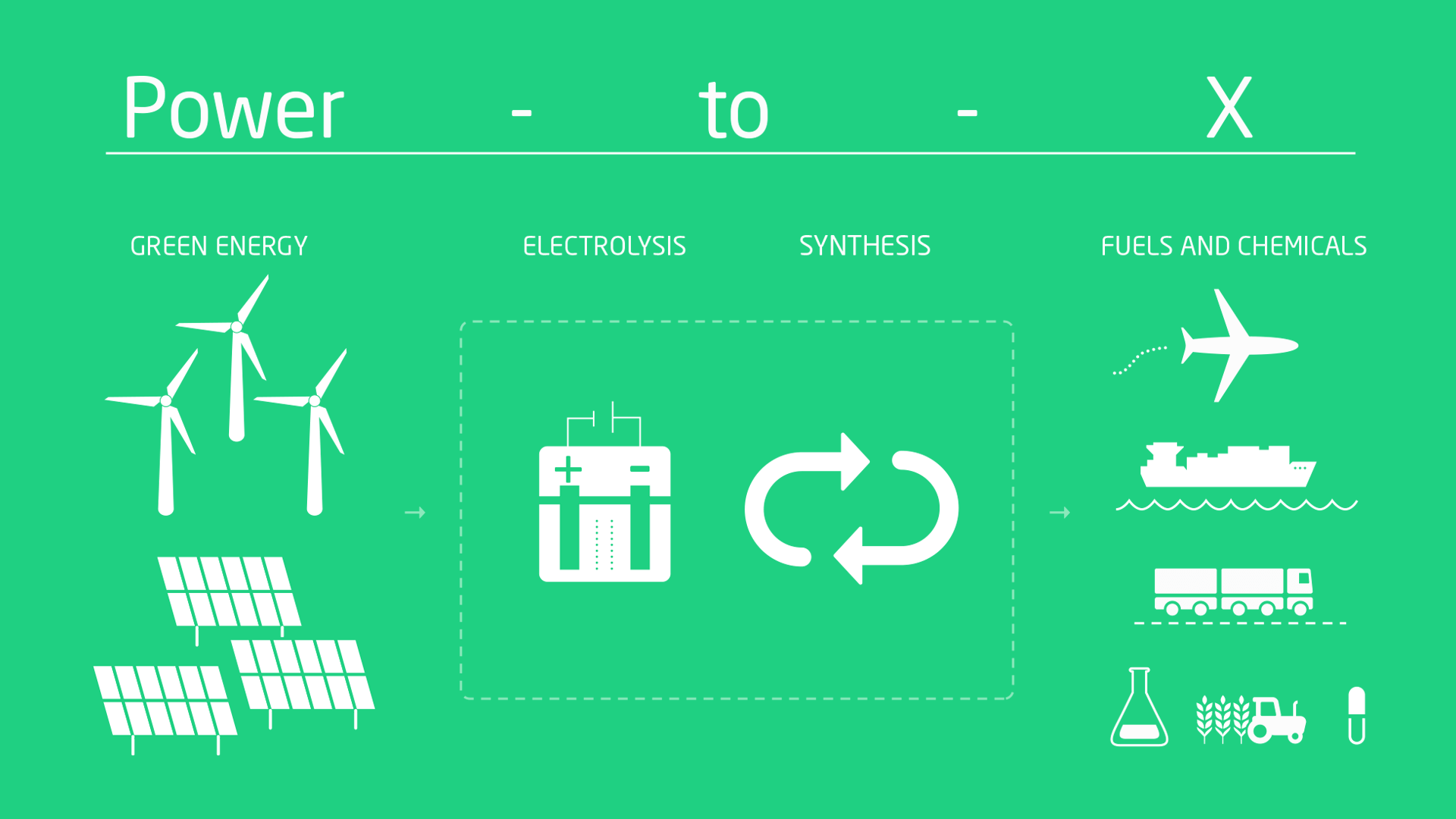Power-to-X - from green energy to green fuel
Power-to-X (PtX) is an essential element in achieving a fossil fuel-free society that still meets an increasing need for energy.

Electricity from renewable energy sources such as wind and sun can, in some cases, directly replace fossil fuels by, for example, substituting petrol-driven cars with electric cars or by heating our houses with heat pumps. However, if we want to convert all of society to using green energy, we must be able to store the energy for those periods in which the sun is not shining or the wind is not blowing. There is also a need for fuels for heavy traffic, aircraft, ships, trucks, and for those parts of manufacturing industry that cannot immediately be electrified.
Power-to-X can meet both these challenges. The technology converts green power into liquid carbon-neutral fuels which, unlike power, can be stored easily and relatively inexpensively. At the same time, they can be used in the same way as fossil fuels and thus also for heavy transport and in energy-intensive manufacturing industry.
What is Power-to-X?
Power-to-X means converting power into something else (x). For example, power can be converted via electrolysis into hydrogen, which can be used directly or in combination with other elements for production of fuels or chemicals.
Power-to-X is an essential element in the green transition. In many cases, fossil fuels can be replaced directly by power, for example in electric cars, just as electric heat pumps can be used to heat our houses.
But not everything can run on electricity and batteries. For use, for example, in heavy transport, aircraft, ships, and trucks, Power-to-X is essential, as electricity can be used as a basis for the process of producing green fuels. The same applies to the very energy-intensive processes in part of our industrial production. Power-to-X can also ensure that we have chemicals for the manufacture of medicines, plastics, and many other products we know from our everyday lives and which are today made using fossil resources.
How does Power-to-X work?
The electricity in Power-to-X comes from renewable energy sources such as solar or wind energy. The first step in Power-to-X is to use the electricity in an electrolysis process in which water (H2O) is split into hydrogen (H2) and oxygen (O).
Hydrogen can be used directly as fuel or it can be used in a synthesis process in which nitrogen (N) or carbon (C) from CO2 is added. This creates new fuels and chemicals such as ammonia, methanol, and methane. These are often characterized as e-fuels or electro-fuels because they are produced using electricity in the process. They can be used as fuels for ships, aircraft, and trucks.
Research is being conducted into how to combine the two processes so that Power-to-X can be done more simply and effectively in a single overall process in the future.

Synthesis process with carbon
By adding carbon to hydrogen, e-fuels such as e-diesel, e-methanol, e-kerosene, e-dimethylates (E-DME), and e-methane can be produced. These are fuels that are chemically identical to the current fossil fuels, and they can therefore be used directly in heavy transport. The fuels are carbon neutral because they are produced from green power and carbon that we recycle from other use.
Synthesis process with nitrogen
By adding nitrogen (N) to hydrogen, you can produce green ammonia (e-ammonia), which can either be used for fertilizers in agriculture or, in the long term, as fuel in shipping.
Ammonia for agricultural fertilizers is currently produced in large and very energy-intensive plants. More than 1 per cent of the world’s total carbon emissions comes from the production of ammonia. A switch to e-ammonia will therefore make a major contribution to a more sustainable agricultural sector.
Why is Power-to-X necessary?
In the transition to a fossil-free society, renewable energy sources such as sun and wind play an important role. In this context, it is essential to be able to store the energy, so that we can also use it when the sun is not shining and there is no wind. In addition, part of our transport and manufacturing industry cannot be electrified, but requires that we convert electricity into something else.
Power-to-X can secure fuels for heavy transport, ships, trucks, and aircraft that cannot use electricity and batteries. In addition, Power-to-X is important for ensuring production of many of the things that are currently produced from fossil resources, such as medicine, plastics, and paints.
Research into Power-to-X
It has long been possible to complete the processes in Power-to-X. However, if Power-to-X is really to contribute to meeting the world’s growing energy needs, technology must become much more energy efficient, so that the fuels produced are profitable and thus competitive.
This requires that we invent new and more effective catalysts. Catalysts help with the whole Power-to-X process such as the conversion of electricity and water into hydrogen, and in the synthesis process with either carbon or nitrogen.
In addition, research is being conducted into how the process in Power-to-X can be simplified so that electrolysis and the synthesis process are integrated and constitute a single step. This will make the production more efficient.
Finally, the researchers still face the task of finding out how the Power-to-X technologies can best be linked with the rest of the energy system. There is a need to develop smart solutions in terms of system architecture, data, digitalization, and automation, so that the best synergy with the rest of the energy system can be built up from the start.
Produced in collaboration with Jakob Kibsgaard, Professor at DTU Physics.